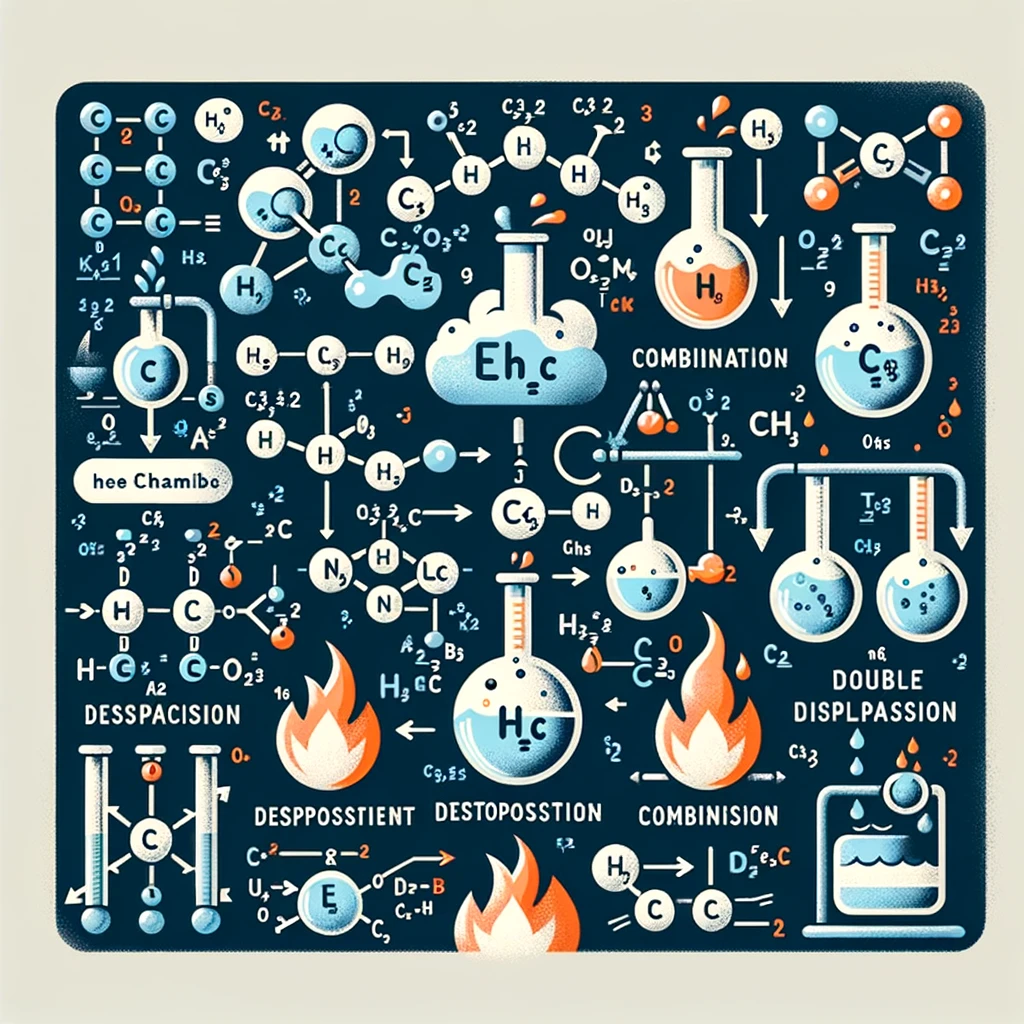
Chemical Reactions and Equations: The Transformations of Matter

Chemical Reactions and Equations: The Transformations of Matter
Introduction:
Chemical reactions are processes in which substances (reactants) transform into new substances (products) with different properties. This topic is fundamental in understanding how different materials interact in various environments, from industrial processes to biological systems.
Balancing Chemical Equations:
Understanding the law of conservation of mass is crucial in balancing chemical equations. It states that mass in a closed system will remain constant, regardless of the processes acting inside the system. This principle ensures that the number of atoms for each element in the reactants side is equal to that on the products side.
Types of Chemical Reactions:
- Combination Reactions: Two or more substances combine to form a single product. Example: (A + B → AB).
- Decomposition Reactions: A single compound breaks down into two or more simpler products. Example: (AB → A + B).
- Displacement Reactions: An element in a compound is replaced by another element. Example: (A + BC → AC + B).
- Double Displacement Reactions: Ions in two compounds exchange places in aqueous solution to form two new compounds. Example: (AB + CD → AD + CB).
- Combustion Reactions: A substance combines with oxygen, releasing a large amount of energy in the form of light and heat. Example: (CH_4 + 2O_2 → CO_2 + 2H_2O).
Factors Influencing Reaction Rates:
- Concentration: Higher concentrations of reactants can lead to increased reaction rates.
- Temperature: Generally, increasing the temperature increases the reaction rate.
- Catalysts: Substances that increase the reaction rate without being consumed in the reaction.
Application in Daily Life:
Chemical reactions are everywhere in our daily lives—from the rusting of iron, the baking of bread, to the cellular respiration in our bodies. Understanding these reactions allows us to control and utilize them for our benefit, in fields as diverse as medicine, engineering, and environmental science.
Conclusion:
The study of chemical reactions and equations not only deepens our understanding of the chemical properties of substances but also equips us with the knowledge to predict and manipulate chemical reactions for practical applications.
Basic Concepts:
- What is the difference between a physical change and a chemical reaction? (Answer: Physical changes involve a change in state or appearance without altering the composition of the substance, while chemical reactions involve a change in the composition of the substance, forming new products.)
- What are the reactants and products in a chemical reaction? (Answer: Reactants are the starting materials, and products are the new substances formed after the reaction.)
- What is a chemical equation, and how does it represent a chemical reaction? (Answer: A chemical equation uses symbols and formulas to represent the reactants, products, and direction of a reaction.)
Types of Reactions:
- What are the different types of chemical reactions? (Answer: Common types include synthesis, decomposition, single displacement, double displacement, and combustion.)
- Provide an example of each type of reaction. (Answer: Synthesis: 2H2 + O2 -> 2H2O; Decomposition: 2HgO -> 2Hg + O2; Single displacement: Cu + AgNO3 -> CuNO3 + Ag; Double displacement: NaCl + AgNO3 -> NaNO3 + AgCl; Combustion: CH4 + 2O2 -> CO2 + 2H2O)
Balancing Equations:
- What does it mean to balance a chemical equation? (Answer: Balancing ensures there are equal numbers of atoms of each element on both sides of the equation.)
- How do you balance a simple chemical equation? (Answer: Adjust coefficients in front of formulas while maintaining chemical integrity.)
Factors Affecting Reactions:
- What factors can affect the rate of a chemical reaction? (Answer: Factors such as temperature, concentration, pressure, and presence of a catalyst can influence the rate.)
- Explain the role of a catalyst in a chemical reaction. (Answer: A catalyst speeds up the reaction without being consumed itself.)
Real-World Applications:
- Provide an example of how chemical reactions are used in everyday life. (Answer: From food preparation and digestion to energy production and manufacturing, countless applications rely on chemical reactions.)